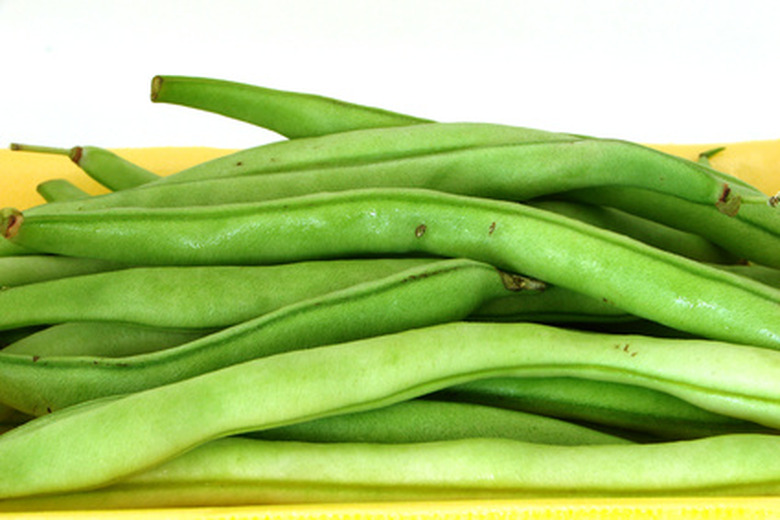Research On Bean Plants
Bean plants are a staple in many gardens and provide the gardener with an abundant crop. Growing beans requires little work. Some bean plants vine up trellises, whereas others are bushy and need no support. Both types require the same planting techniques and environment.
Seeds and Sprouts
Seeds are normally soaked in water before sowing to allow the outer shell to soften. Lima beans, which are considered a bush bean, are planted 1 to 1 1/2 inches deep, after the last frost. Planting before the last frost may cause tender foliage or new roots to freeze. Plant bush beans 2 to 4 inches apart in rows 2 feet apart. Germination occurs in 14 to 16 days. Weaker sprouts must be plucked from the garden, allowing only the most vigorous to grow. Sprouts should then be 4 to 6 inches apart to ensure a plentiful harvest.
- Bean plants are a staple in many gardens and provide the gardener with an abundant crop.
- Some bean plants vine up trellises, whereas others are bushy and need no support.
Flowers and Pods
The creamy-white flowers grow throughout the plant and starting to produce bean pods when the plant has reached maturity. The blooms remain on the plant during pod growth, drying out at the maturity of the pod. The lima bean plant produces 3-inch-long pods, which are flat, long and curved, similar to a banana. The pod usually has four to six kidney-shaped seeds that are flat and white, red or green. They can be frozen, dried or eaten fresh from the pod.
Harvest
Harvesting times vary depending on the variety of the plant, but 65 to 75 days is average for a bountiful crop. Beans should be picked from the plant when they are green and round. Cut the pods from the stem of the plant, ensuring the plant does not become damaged or uprooted by attempting to pull off the bean pods. Beans must be harvested often or the plant will stop making new pods.
- The creamy-white flowers grow throughout the plant and starting to produce bean pods when the plant has reached maturity.
Root Rot
The most widespread infection that disturbs the bean plant is root rot. This disease makes rust-colored lesions at the base and longitudinal roots of the plant. The plant cannot grow or produce properly if the disease is not confined immediately. The infection may be fatal to the plant if not tended to quickly. Drainage is a major key in preventing root rot. Soil must be properly aerated and have plenty of drainage. Rotation of plants every two years helps soil remain fresh and capable of maintaining new root structures and systems.
- The most widespread infection that disturbs the bean plant is root rot.
- The infection may be fatal to the plant if not tended to quickly.
Environment
Weather is also vital in the growth of bean plants. Cold temperatures cause the plant to mature slowly, with a small crop. When temperatures are high, leaf-burn becomes a possibility, causing the flowers to fall off or not develop. Water plants with 1 inch of water per week to maintain even development. More water may be needed during flowering and pod development. Wilted leaves is a sign to increase watering. Watering in the morning helps prevent mildew and allows the plant to soak in the majority of the water before daytime heat.
- Weather is also vital in the growth of bean plants.
- Watering in the morning helps prevent mildew and allows the plant to soak in the majority of the water before daytime heat.
